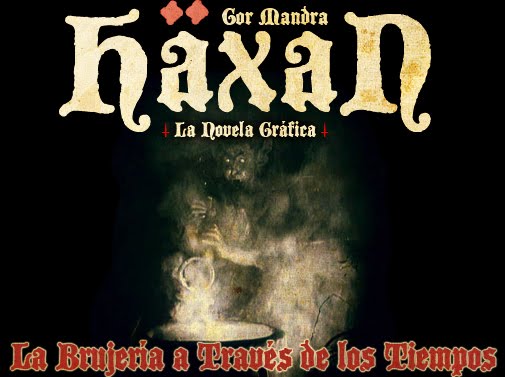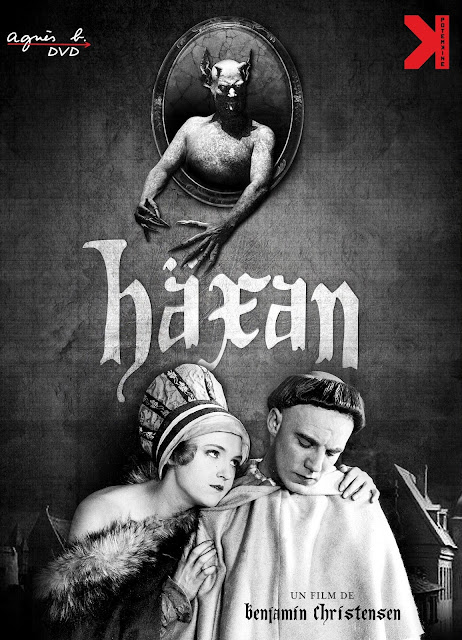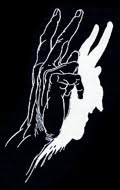Häxan (English title: The Witches or Witchcraft Through The Ages) is
a 1922 Swedish/Danish silent film written and directed by Benjamin
Christensen. Based partly on Christensen's study of the Malleus
Maleficarum, a 15th century German guide for inquisitors, Häxan is
a study of how superstition and the misunderstanding of diseases
and mental illness could lead to the hysteria of the witch-hunts.
The film was made as a documentary but contains dramatized
sequences that are comparable to horror films. With Christensen's
meticulous recreation of medieval scenes and the lengthy production
period, the film was the most expensive Scandinavian silent film ever
made, costing nearly two million Swedish krona. Although it won
acclaim in Denmark and Sweden, the film was banned in the United
States and heavily censored in other countries for what were
considered at that time graphic depictions of torture, nudity, and
sexual perversion.
· Plot:
The first part of the film is a scholarly dissertation on the
appearances of demons and witches in primitive and medieval
culture. A number of photographs of statuary, paintings, and
woodcuts are used as demonstrative pieces. In addition, several
large scale models are employed to demonstrate medieval
concepts of the structure of the solar system and the commonly
accepted depiction of Hell.The second part of the film is a series
of vignettes theatrically demonstrating medieval superstition and
beliefs concerning witchcraft.

These include Satan (played by Christensen himself) tempting a
sleeping woman away from her husband's bed and terrorizing a
group of monks. Also shown is a woman purchasing a love potion
from a supposed witch, and a sequence showing a supposed witch
dreaming of flying through the air and attending a witches' gathering.
The third part of the film is a long narrative broken up into several
parts. Set in the Middle Ages, it concerns an old woman accused of
witchcraft by a dying man's family. The narrative is used to
demonstrate the treatment of suspected witches by the religious
authorities of the time. The old woman, after being tortured, admits
to heavy involvement in witchcraft, including detailed descriptions of
a Witches' Sabbath, even going so far as to "name" other supposed
witches, including two of the women in the dying man's household.
Eventually, the dying man's wife is arrested as a witch when she
admits that she falsely accused the old woman of witchcraft.

The final part of the film seeks to demonstrate how the superstitions
of old are better understood now. Christensen seeks to make the
claim that most who were accused of witchcraft were mentally ill,
and in modern times, we recognize that people are not possessed
by the devil but suffering from a disease. His case revolves around
vignettes about a somnambulist and a kleptomaniac, the implication
being that these behaviors would have been thought of as
demonically-influenced in medieval times whereas modern times
recognizes them as psychological ailments.
· Fonts: Wikipedia

















I adore this film! It's among the coolest things I've seen. And Benjamin Christensen as the Devil, too! I bet you like Les Vampires! I wrote about it on my blog here: The Vampires
ResponderEliminar